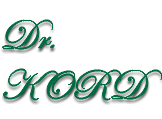by Dr. David Williams

If you ask most doctors about bile, the common response would be that it’s simply a digestive fluid put out by the liver that aids in the absorption of fats and fat-soluble vitamins. However, research from the Baylor College of Medicine indicates that your body’s ability to regenerate liver tissue depends on signals that indicate there is an imbalance in bile levels.
While bile is made in the liver, it is stored and concentrated in the gallbladder—another component that most doctors feel patients can easily live without. As a result, over half a million people each year in the US alone lose their gallbladder to surgery and are still being told there will be few, if any, long–term negative consequences. Not true.
Bile acids are produced from cholesterol in your liver and then flow into your gallbladder where they are stored and concentrated as much as fivefold. As your body senses the movement of fat into the small intestine, the gallbladder releases the bile to emulsify the fat—making it easier to absorb. As the bile continues through the digestive tract, 90 to 95 percent of it is reabsorbed from the large intestine and returned to the liver, where it is reused as many as twenty times.
With a healthy gallbladder, proper amounts of bile are released into the digestive tract as needed. Without a gallbladder, there is a continuous trickle of bile into your system regardless of the presence or absence of fat. The failure to match bile output to fat presence jeopardizes one’s ability to properly digest fat and, eventually, leads to deficiencies in fat-soluble vitamins and essential fatty acids, poor cholesterol metabolism, and the absorption of improperly digested fat globules.
This latest research has shown that exposure to higher relative amounts of bile acids triggers regeneration in damaged portions of the liver—which helps explain why individuals who take drugs that sequester bile acids, such as cholesterol-lowering drugs, can’t regenerate liver tissue.
Interestingly, animals that were bred with the inability to regenerate their liver—due to a lack of ability to recognize increased bile acid levels—regained the power of regeneration when they were given bile acids in their diet.
This is another prime example that illustrates the long-term consequences of unnecessary surgery and drug use. Continuing to take cholesterol-lowering medication in the presence of liver disease could be disastrous. Example conditions, as indicated by deteriorating liver function tests, include hepatitis, cirrhosis, cysts, Reye’s syndrome, liver cancer, sarcoidosis, Wilson’s disease, and hemochromatosis.
An Imbalance of Bile Can Unbalance Your Scale
On a related front, researchers have demonstrated that an imbalance of bile acids might be contributing to the current pandemic of obesity in the Western world.
The classical role of bile acid is thought to be one of enhancing fat absorption in the intestine. Just recently in France, however, researchers clearly demonstrated that bile acids also regulate the metabolism of fat by stimulating the production of active thyroid hormone within fat cells. When animals were given bile acids, their metabolism in brown fat tissue increased. The intake of the bile acids also prevented obesity and insulin resistance.
Many scientists now feel that bile acids, through natural metabolic stimulation and fat breakdown, may be one of the safer and more effective tools to increase fat loss and help control body weight. When you put the number of people who have hypothyroidism together with the ability of bile acids to increase thyroid hormone production, it makes perfect sense.
I strongly suggest that you check your current multivitamin/mineral supplement and make sure it contains bile as one of its ingredients. Bile supplementation is particularly crucial if you take cholesterol–lowering drugs, no longer have your gallbladder, and/or have problems digesting fatty foods. There are several bile salt products on the market, including Cholacol from Standard Process. I recommend taking two tablets immediately before a meal.
Beets Can’t Be Beat
When talking about the need for bile acids, vegetarians often express their reluctance to use supplements that contain ox bile. Unfortunately, it is often the true vegetarians who demonstrate the greatest need for additional bile acids. I suspect this situation is due in part to the fact that their diet generally includes more fiber, which tends to bind with the bile salts and causes them to be excreted rather than reabsorbed. Diets like these require an increase in the production of bile salts.
Beets and beet juice are often used as substitutes for bile supplementation. While beets may be very beneficial for your health, they are not a substitute for bile acids and salts. Beets are rich in betaine, which stimulates liver cell function and provides a protective effect for the liver and bile ducts. One recent study found that ingesting beets can have a significant tumor–inhibiting effect and help prevent cancer.
One benefit of betaine that has recently come to light is its ability to reduce homocysteine levels. Homocysteine, you’ll recall, is the toxic amino acid that increases your risk of cardiovascular disease.
Betaine, also known as trimethylglycine (TMG), is a minor “mood enhancer.” Through a series of events, it increases serotonin levels and can be used to help relieve many cases of depression. Beets (cooked, raw, or juiced) are highly underutilized in this country as a medicinal food—and it seems that hardly anyone praises the benefits of the leaves of the beet plant. Beets belong to the same plant family as spinach, and they are just as nutritious.
